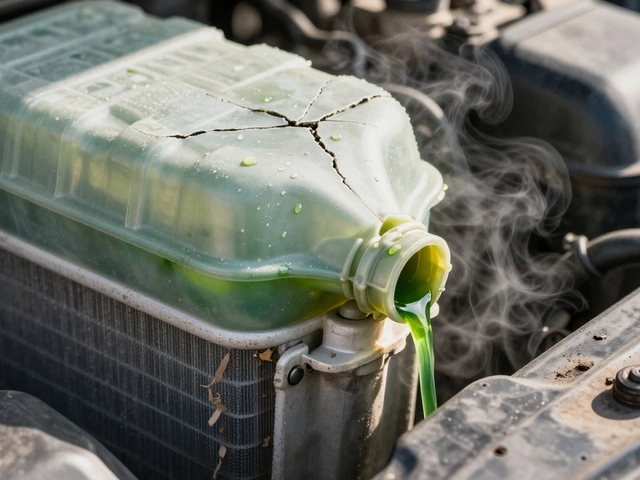Your engine will usually warn you long before it gives up. Ignore those hints and it gets expensive. This is exactly what happens when you keep driving with bad spark plugs: the spark gets weak, fuel stops burning clean, the cat runs hot, and your wallet takes the hit. I’ll show you what to look for, what can break, how long you can push it, and what it should cost to sort in the UK right now.
- TL;DR: Misfires waste fuel, overheat the catalytic converter, and can damage coils and the cat-fix the plugs early and it’s a cheap win.
- Common signs: rough idle, hard starts, poor acceleration, worse MPG, fuel smell, and a flashing or steady check engine light.
- How long can you drive? Light, occasional misfires: short trips only. Flashing MIL or power loss: stop and fix-risk of cat damage is high.
- Typical UK 2025 costs: plugs £40-£120 parts, £60-£150 labour; coils £90-£220 each; catalytic converter £600-£1,800.
- DIY friendly on many cars: cold engine, right socket, anti-seize only if the plug maker says, torque correctly, coil boots inspected.
What actually happens when you drive with worn plugs
Spark plugs light the air-fuel mix. When they’re worn, fouled, cracked, or the gap has opened up, the spark weakens or goes missing, and the burn becomes patchy. That’s a misfire. You feel it as a stumble, a shaky idle, or a flat spot when you accelerate. The ECU tries to correct with more fuel, but unburnt fuel then enters the exhaust. The catalytic converter has to burn that off, runs hotter than it should, and starts to break down. Keep going like this and a £100 issue becomes a £1,000 one.
Here’s the chain reaction in plain English:
- Worn plug = weak spark.
- Weak spark = misfire and unburnt fuel.
- Unburnt fuel = hot catalytic converter and soot.
- Hot cat = melted substrate (expensive).
- Misfire heat = overworked ignition coils and fried coil boots.
On turbo engines, misfires under boost are rougher. Raw fuel can wash cylinder walls, thinning the oil film. That means more wear and a higher chance of rough cold starts, especially in damp UK weather.
Source sanity check: This is exactly how ignition misfires are described by NGK and Denso in their technical bulletins, and it aligns with MOT emissions guidance from DVSA-persistent misfire and a lit MIL can lead to failure.
Symptoms you’ll feel-and quick checks you can do at home
Think of this section as your “is it really the plugs?” filter. Many misfires are plugs. Some are coils, leads, or injectors. A few are vacuum leaks. Start simple.
Classic symptoms of worn plugs:
- Rough idle that smooths out at higher revs.
- Hard cold starts, especially after rain or overnight damp.
- Hesitation or jerky acceleration between 1,500-3,000 rpm.
- Worse fuel economy (5-30% depending on how bad the misfire is).
- Check Engine Light: steady for stored codes, flashing for active misfire-slow down and avoid heavy load.
- Exhaust smell of fuel, sometimes a ticking noise from the engine bay when the spark is arcing in a coil boot.
Quick driveway checks (10-20 minutes):
- Scan for codes. A cheap Bluetooth OBD-II reader can pull P0300 (random misfire) or P0301-P0304 (misfire cylinder 1-4, etc.). If you see P0172/P0175 (rich) with misfires, plugs are a prime suspect.
- Look at long-term fuel trim (LTFT). If it’s heavily negative (say below -10%) with misfires, you’re likely dumping fuel due to poor burn.
- Cold start listen test. Start from cold and listen for a pulsing beat or shaky idle for the first minute-classic misfire pattern.
- Coil swap test (if coils sit on top of each plug). Move the coil from the misfiring cylinder to another cylinder and clear codes. If the misfire follows, the coil is bad; if it stays, the plug is the likely culprit.
- Visual plug check (only if you’re comfortable removing a plug):
- Chalky white insulator = overheating.
- Black, sooty = rich mixture or poor spark.
- Oily = possible valve stem or ring issue (call a pro).
- Gap looks wide or electrode rounded = worn plug.
Smell test: A strong raw fuel smell at the tailpipe right after a misfire is your sign that unburnt fuel is getting to the exhaust. That’s how cats overheat. Don’t ignore it.
When it’s probably not the plugs: If the misfire only happens at hot idle with AC on and disappears under light throttle, and your plugs are relatively fresh, look for vacuum leaks or a lazy MAF. If it happens only on heavy rain days, suspect cracked coil boots or old leads rather than the plugs themselves.

How far can you push it? Risks, damage, and MOT/emissions
Short answer: not far, and not hard. The longer answer depends on the severity of the misfire:
- Occasional stumble, no warning light: You can limp to a shop in town. Avoid motorways and hard acceleration. Book it soon.
- Steady check engine light with misfire codes: Keep trips short and gentle. Fix within days.
- Flashing check engine light: That’s the ECU begging you to stop. Pull over, let it cool, and arrange repairs. This is when catalytic converters melt.
MOT reality in the UK: An illuminated MIL for emissions-related faults is a fail on many 2008+ petrol cars. A clear misfire during the test, high CO/HC, or a P0420 (catalyst efficiency) code can also trip you up. The DVSA MOT inspection manual backs this. You might pass one day and fail the next if the misfire worsens.
Pound-and-pence risk: Misfires don’t just cost fuel. They cascade into bigger bills. Here’s a realistic snapshot using UK 2025 ranges.
| What you notice | Typical code(s) | Safe driving window | What can break if ignored | Likely UK repair cost (2025) |
|---|---|---|---|---|
| Rough idle, light stumble | P0301-P0304 | Days, gentle use | Ignition coil boots, fuel-soaked cat | New plugs + labour: £100-£270 |
| Misfire under load, poor acceleration | P030X, sometimes P035X | Stop heavy loads | Coil packs overheat | Coil(s) fitted: £120-£300 each |
| Fuel smell, flashing MIL | P0300, P030X | Stop now | Catalytic converter, O2 sensors | Cat + sensors: £600-£1,800+ |
| After weeks of misfires, rattly exhaust | P0420 | N/A | Cat substrate melts/clogs | Cat replacement: £700-£1,800 |
Fuel economy hit rule of thumb: If your car did 45 mpg and you’re down to 38 mpg, that’s roughly a 15% loss. If you spend £160/month on petrol, a 15% penalty is about £24/month-money you’re literally burning.
Knock-on risks people miss:
- Oil dilution from repeated cold misfires (oil smells of fuel sooner).
- DPF issues on petrol particulate filter (GPF) cars if the cat runs rich and regeneration gets messy.
- Turbo fouling on small turbo engines (misfires spit soot into the turbine and O2 sensors).
When to stop driving immediately:
- Flashing MIL plus noticeable power loss.
- Strong fuel smell and a chugging idle after a hot run.
- Metallic rattle from the cat area after weeks of misfires.
Fixing the misfire: parts, labour, DIY steps, and UK 2025 costs
Good news: replacing spark plugs is one of the best value repairs you can do. On most 4-cylinder engines it’s a 45-90 minute job. V6 and some transverse engines can be tight but still doable with patience.
Recommended intervals (check your owner’s manual):
- Nickel/copper plugs: 20,000-30,000 miles.
- Platinum: 40,000-60,000 miles.
- Iridium: 60,000-100,000+ miles.
Brands that publish strong data: NGK, Denso, Bosch. Most modern petrol cars in the UK ship with iridium or platinum from factory. Match the spec, heat range, and gap recommended by the manufacturer. Don’t guess the heat range.
UK 2025 price ballpark:
- Spark plugs (set of 4): £40-£120 depending on brand/iridium.
- Labour at independent garages: £60-£150.
- Coil packs: £60-£180 each for parts; £30-£120 labour per coil depending on access.
- Intake gaskets (if a plenum needs removal): £10-£40.
DIY steps (for a simple 4‑cyl, coil-on-plug engine):
- Cold engine. Disconnect the battery negative if access is tight around the fuel rail.
- Remove engine cover, unplug the coils, and undo the coil bolts. Pull coils straight up. Inspect boots for cracks or tracking marks (grey lightning lines).
- Blow out the plug wells (a can of air works) so grit doesn’t fall into the cylinder.
- Use a spark plug socket and a torque wrench. Turn anti-clockwise to remove. If a plug is stubborn, don’t force it-warm the engine slightly and try again.
- Check the new plug gap only if the manufacturer allows. Most iridium plugs come pre-gapped-don’t bend the fine wire tip.
- Thread by hand first. If the plug maker specifies anti-seize, use the lightest smear. Many modern plugs have a nickel coating-no anti-seize needed. Follow the plug maker’s guidance.
- Tighten to the torque spec in your manual (typical range 18-25 Nm for many small petrol engines, but verify). Over-tightening cracks insulators; under-tightening leaks compression.
- Refit coils. If a boot looks tired, replace the boot or the coil. A cheap boot now saves a coil later.
- Clear codes and test drive. A smooth idle and clean pull through the revs means you nailed it.
When to replace coils with the plugs: If your car is past 80k miles and you have repeated coil-related codes (P035X), or you see arcing marks on multiple boots, it’s smart to do coils on that bank. Many owners pair new plugs with fresh boots as a middle ground.
Warranty note: Some plug makers warn against anti-seize and specify dry threads with a crush washer. Using anti-seize can change torque values and lead to over-tightening. Always follow the sheet in the box.
Aftercare: Recheck torque after the first heat cycle if your manual asks for it. Listen for any whistle under load (could be a loose plug). If the misfire returns within days, scan again-an injector or vacuum leak may also be in play.

Cheat sheets, decision tree, and mini‑FAQ
Here’s the practical stuff you can keep on your phone.
Quick decision tree:
- No light, rare stumble: Book plugs soon. Avoid heavy throttle.
- Steady light, P030X: Replace plugs first. If misfire stays on the same cylinder, swap coils to confirm coil failure.
- Flashing light: Stop. Tow or fix where you are if safe. Check plug and coil on the flagged cylinder before anything else.
- After new plugs you still misfire: Smoke test for vacuum leaks; check injector on the affected cylinder; compression test if the engine has high miles.
Maintenance cheatsheet:
- Change interval: Follow the car’s schedule; halve the interval if you do short, cold urban trips only.
- Always replace as a set. Mixing old and new plugs can mask issues.
- Use dielectric grease sparingly inside coil boots to prevent tracking.
- Don’t wash the engine bay before plug work-water in the wells causes arc faults.
- Note the mileage/date on the airbox. It helps the next tech (or you) later.
Common pitfalls:
- Cross-threading plugs-start threads by hand only.
- Wrong heat range-stick to OEM spec to avoid pre-ignition or fouling.
- Re-using crushed washers-use the new washers that came with the plugs.
- Ignoring a single cylinder miss-cats don’t care which cylinder did it; damage is damage.
Mini‑FAQ:
- Can bad plugs damage my catalytic converter? Yes. Unburnt fuel overheats the cat. This is the costliest risk.
- Will bad plugs hurt my turbo? Indirectly. Misfires send soot and heat into the turbine and O2 sensors, shortening life.
- Do I need a wheel alignment after plug work? No. Different system.
- How do UK winters affect plugs? Damp air and short trips increase fouling and misfires on cold start. Keep your battery strong-low cranking voltage weakens spark.
- Should I upgrade to iridium? If your car supports it, yes-longer life and stronger spark. Don’t “upgrade” the heat range.
- What if my car has leads instead of coil-on-plug? Replace the leads if they’re old or cracked. They can mimic plug failures.
Safety reminder: A flashing MIL is not a suggestion; it’s a warning. Back off, keep revs low, and get it fixed before the cat pays the price.
If you want one number to remember: plugs now are cheap; catalytic converters later are not. Act early.




